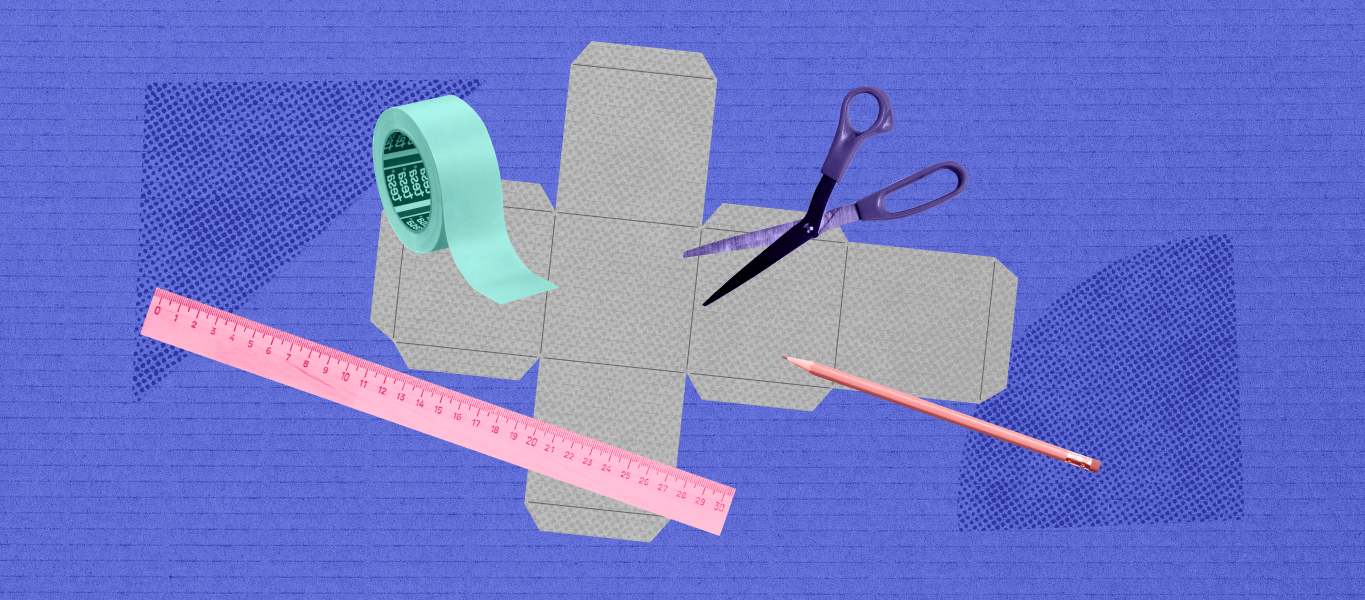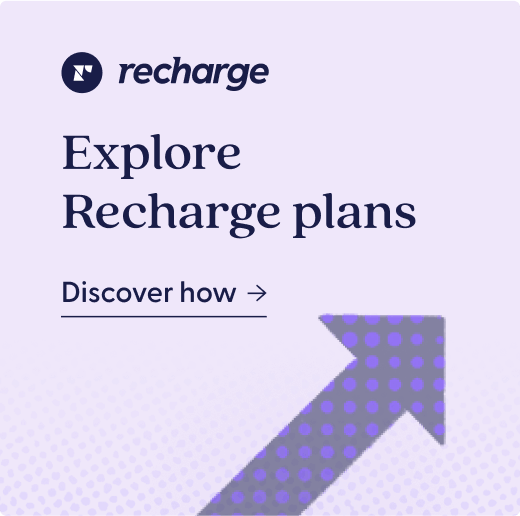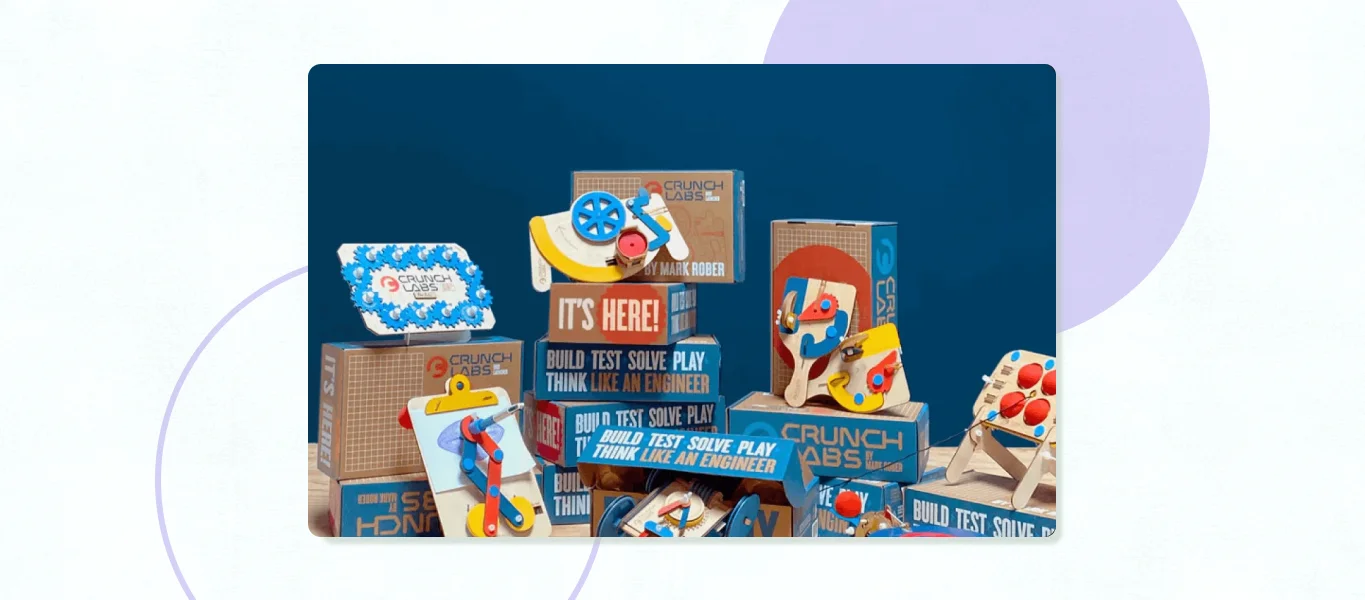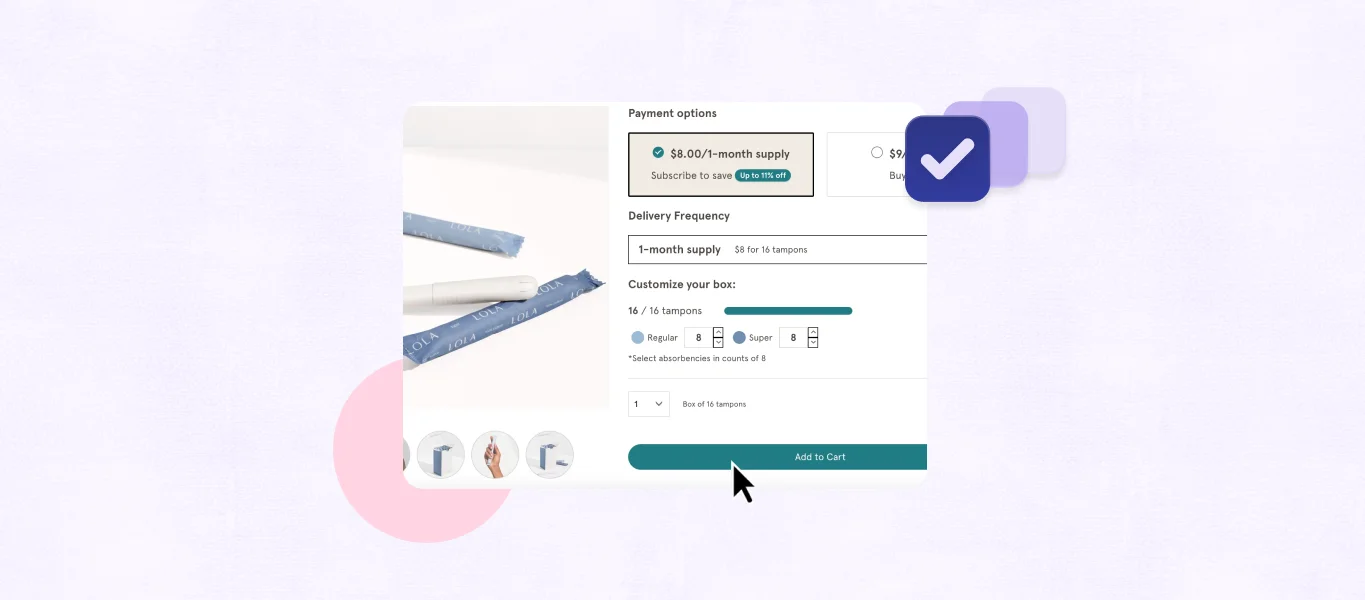We’ve all heard the phrase “don’t judge a book by its cover”—in other words, pay more attention to the inside than the outside. And while this certainly may hold true in many situations, there’s another school of thought when it comes to product packaging.
Product packaging is a phenomenal opportunity to extend your brand in multiple dimensions, from imagery to values. It’s a blank canvas on which you can continue to write your brand story, strengthening customer relationships and creating an unforgettable experience. Today, we’ll explore the key pieces around product packaging so you can leverage this aspect of your business.
Product packaging basics
First, let’s review the different types of packaging available.
You’ve taken the time to create incredible products with quality materials, and you’re ready to send them off to your eager customers—first things first, you’re going to need to send them in something. For shipping products, you have a few options:
- Mailer box
Mailer boxes offer great protection for your products. They have flaps that secure close, ensuring products don’t fall out in transit. Plus, they’re made with corrugated cardboard, a durable material that prevents the products from being crushed or punctured.
They’re also very versatile and come in a wide variety of shapes, sizes, colors, and paper types. You can easily customize mailer boxes to match your branding.
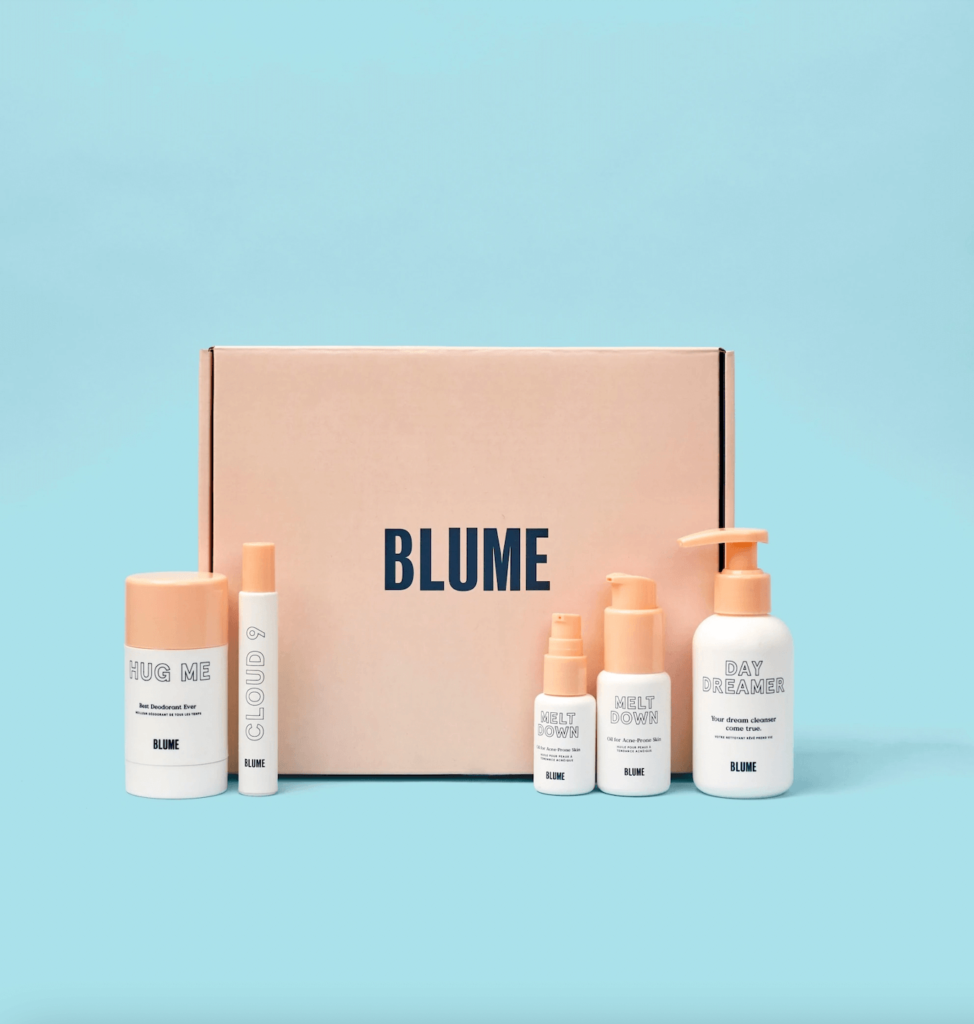
- Shipper box
For bulkier or heavier items, you might want to use a shipper box. These boxes are also great for fragile products, since you have more space to add protection.
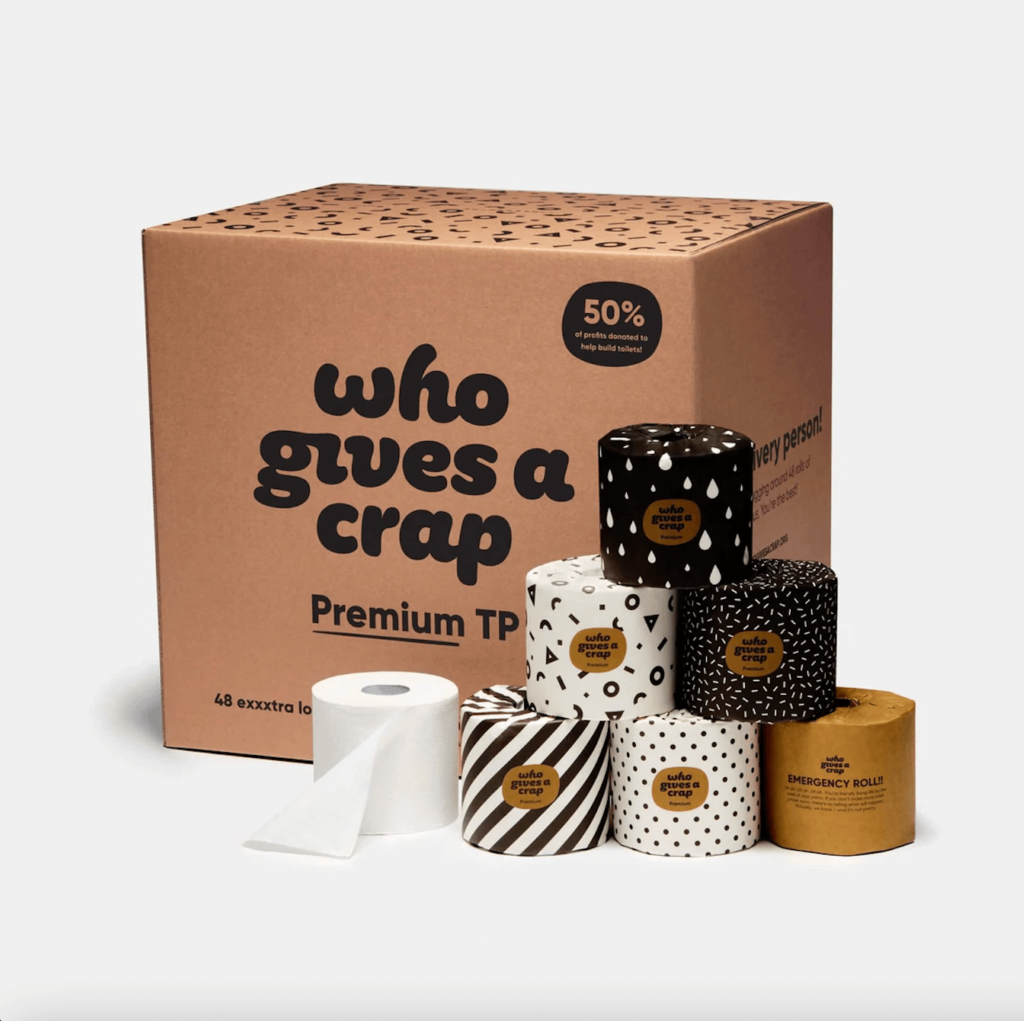
- Mailer envelope
Finally, for small and durable items, you can use a mailer envelope—think razor blade or deodorant stick refills. These envelopes have some padding, so delicate items will still be protected. It’s harder to create an unboxing experience with this shipping option (since they don’t come in a box) but can still make sense based on the product you are providing.
Creating a unique unboxing experience
Providing customers with an amazing product experience starts with the unboxing moment. Your customers have eagerly been awaiting the arrival of their products, checking the mail and order updates every day. When the box shows up on their doorstep, the anticipation has already been brewing.
If you’ve ever had this experience—opening a box to discover colorful tissue paper, a cleverly written insert, or a personalized card—you know the difference it can make. In fact, unboxing videos are an entire genre on YouTube. Google reports that the amount of time people spend watching unboxing videos just on their phone is equivalent to watching “Love Actually” 20 million times. Clearly, there is a phenomenon around that imminent moment of excitement and the delight that follows.
Think about your overall brand—your story, product, and values—and weave these pieces into the unboxing experience. For example, LitJoy Crate makes collections of books and accessories for fans. As a brand focused on the power of storytelling, they bring this mission to their boxing. Their boxes are decorated based on the items inside, so subscribers get a preview before even opening the box—like a prelude to a story, of sorts. Inside, they find their items placed in paper confetti, arranged to give an overview of all the goodies inside, like a table of contents.
Let’s dive into all the ways to create this unique unboxing experience for your subscription customers.

- Presentation
You want your customer to feel delight and excitement from the moment they open the box—and that starts with presentation. Think about charcuterie boards, and how they’re arranged with aesthetic craft and intention. It’s said that we eat with our eyes first, and seeing food arranged so artfully prepares us to enjoy it even more. Despite being just as delicious, it wouldn’t quite look the same if everything was just thrown on the plate.
You can use dividers to separate products and inserts to add more space. This allows the viewer to take in the spread with more ease, visually. Additionally, it serves to highlight the different components in a package. For example, Bite’s box has a placement area for their toothpaste bits jar so it captures the main focus. Then, they arrange the brush and floss alongside.

- Social media sharing
One of the best ways to spread the word about your brand is through flywheel marketing. This is a process in which your customers turn their friends onto your products, like an organic customer acquisition. One of the top ways this happens? Your customers share on social media.
Now, to inspire your customers to share, you can’t just think about what matters to your brand. Think about what they would like to share—probably something engaging, creative, and fun. In a way, you’re actually creating for your customer’s audiences. Put yourself in their shoes and create a compelling, exciting experience that they’ll genuinely want to share with their friends and followers.
- Eco-friendly materials
Shipping products, especially on subscription, can add up to a lot of extra waste. The vast majority of consumers care about sustainability and prefer to shop with brands who prioritize it. When planning the packaging for your products, focus on ways you can use regenerative materials.
Bumpin Blends ships their smoothie cubes in a completely compostable cooler that can dissolve in water. They also encourage their biweekly subscribers to switch to a monthly plan—that way, they’re getting only one box shipped each month and saving on all the extra packaging. To incentivize the switch, they offer an additional discount, so customers save more money and the brand has less environmental impact.

- Branding & education
You can also share this as a brand value on the packaging itself. Here, Keap Candles uses their packaging as a space to educate customers on how to properly compost and make use of their materials.
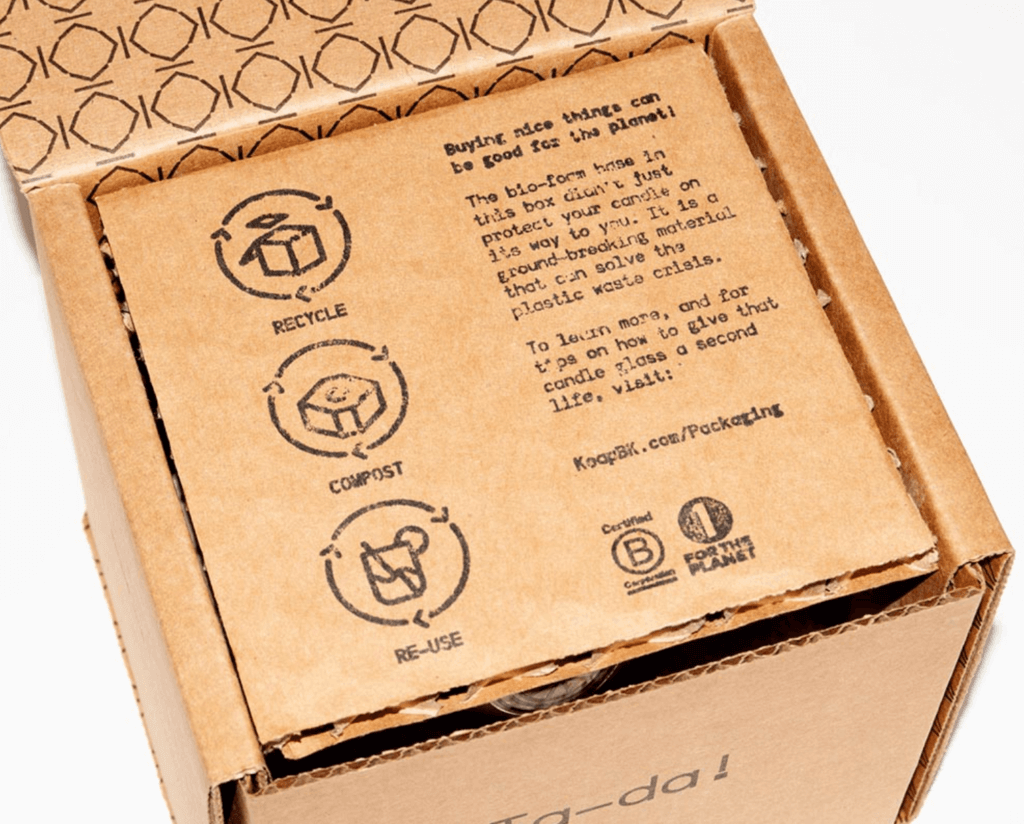
As mentioned, your product packaging is like a blank canvas. This is a great space to share more—whether it’s instructions for use, details on the products, or a clever insert.
Here, Bite writes a quippy line referencing back to their brand mission.
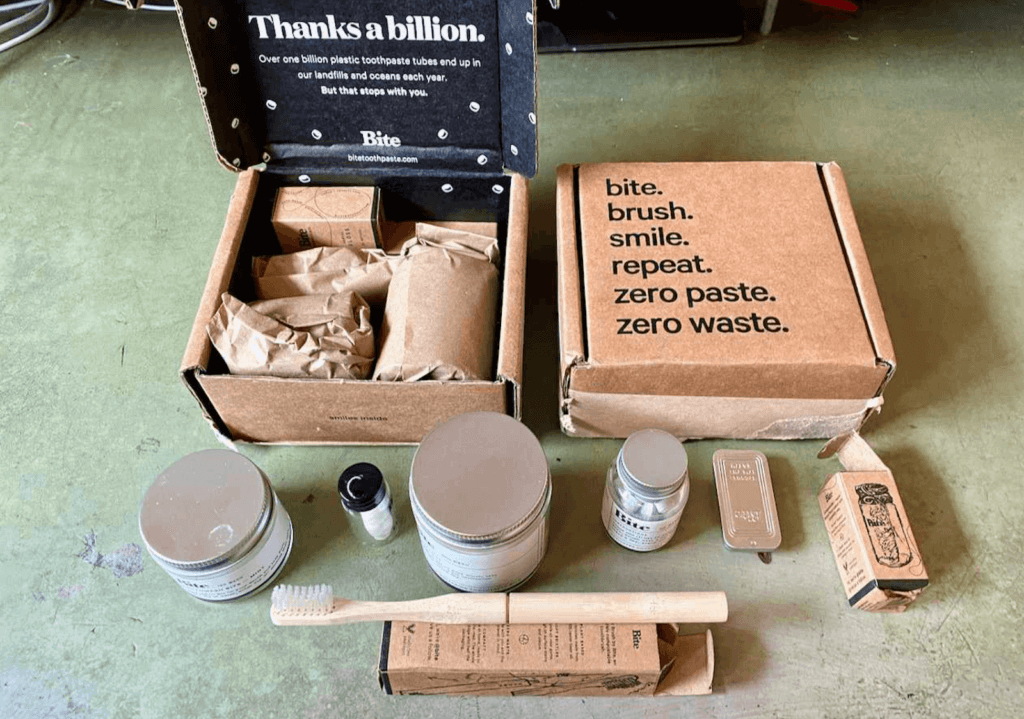
And here, Dropps uses the packaging space to explain how to use their different detergent pods.
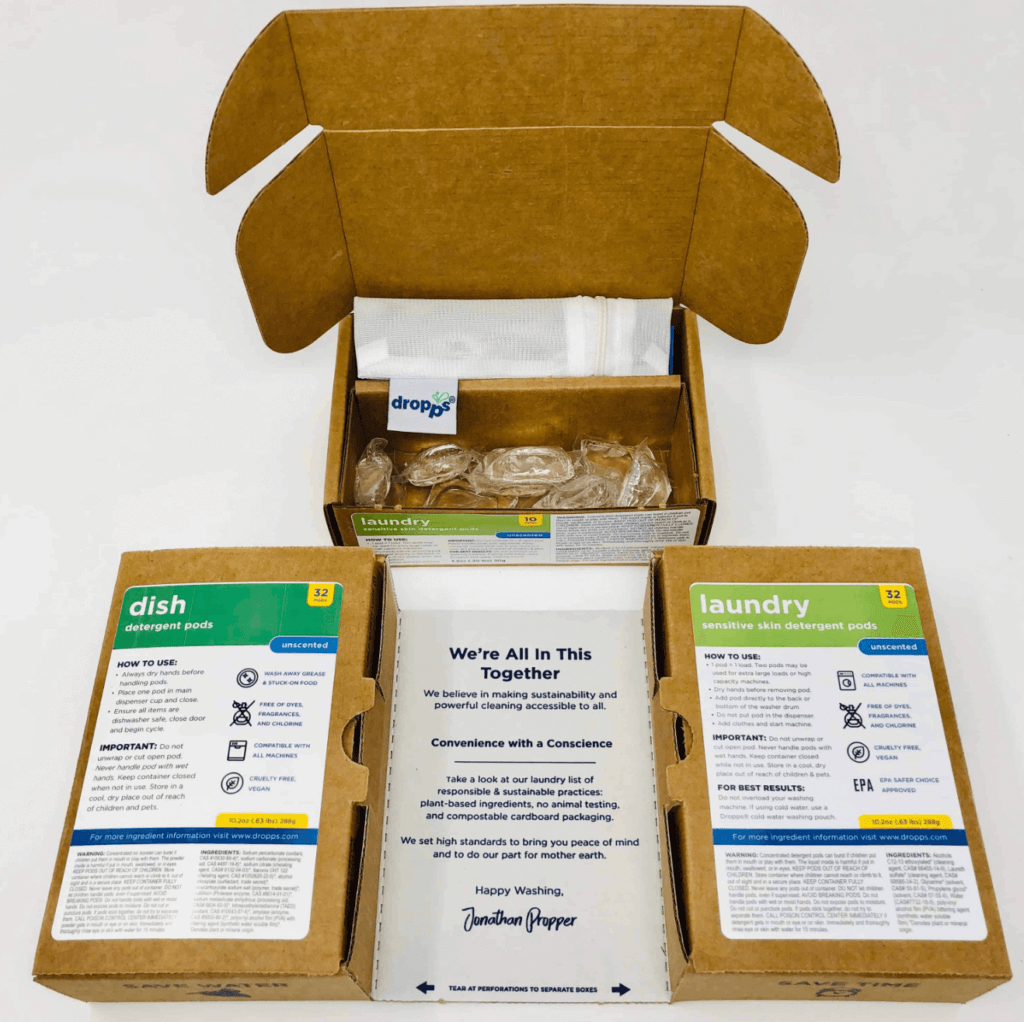
- Safe delivery
While you should focus on all the elements listed above, ultimately the most important one is preservation. You want the products to arrive intact, with no broken parts or damaged pieces. Make sure that the box is outfitted with any necessary protective layers, like bubble wrap or tissue paper. Fit everything properly so there isn’t room for products to move around too much in transportation.
What’s outside & inside count
Packaging is an essential element of your overall product strategy and customer experience. If your products arrive damaged or broken, your customers won’t get much use or enjoyment out of them. But, it would be a wasted opportunity to just send them in a plain box. Focus on both the pragmatic and the playful. It’s important to choose sturdy and reliable packaging, so you protect products in transit. And, the packaging is also a chance to continue telling your brand story through an unforgettable unboxing experience, intentional presentation, and additional branding and education.
The package will hold your customer’s items from the time between leaving your facility and arriving in their hands. Make sure it is a safe and secure container but remember that with function, there’s often an opportunity for fun.
